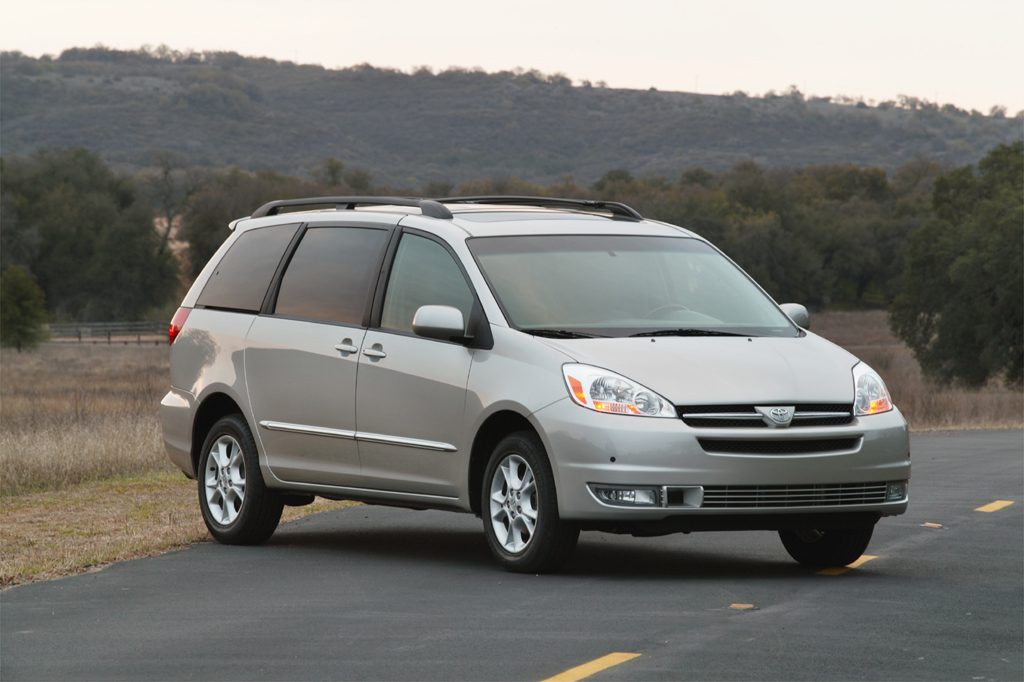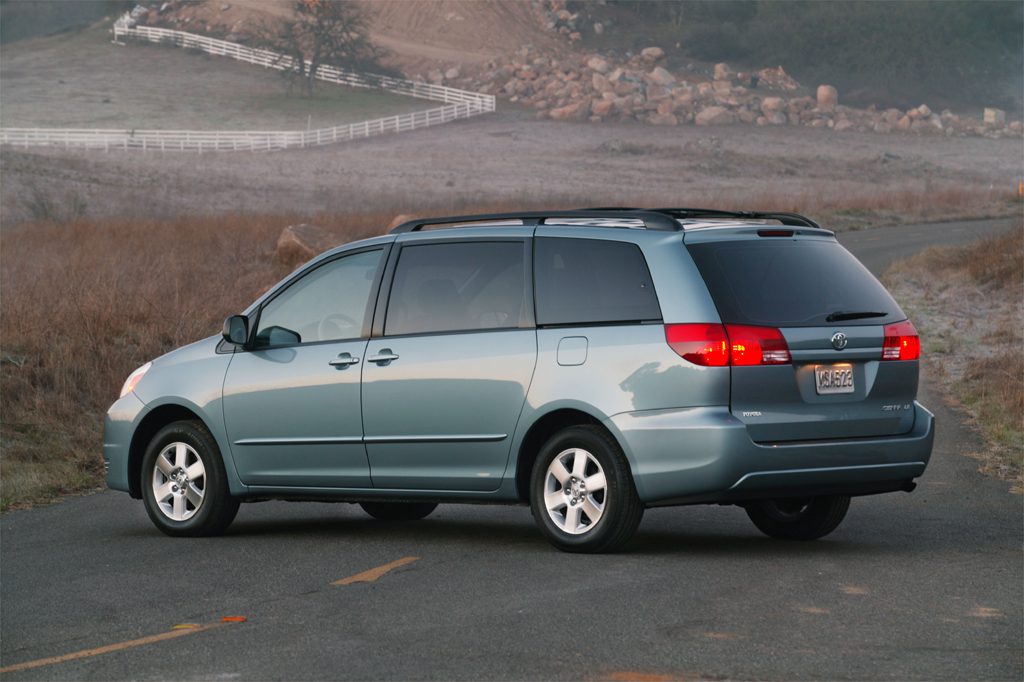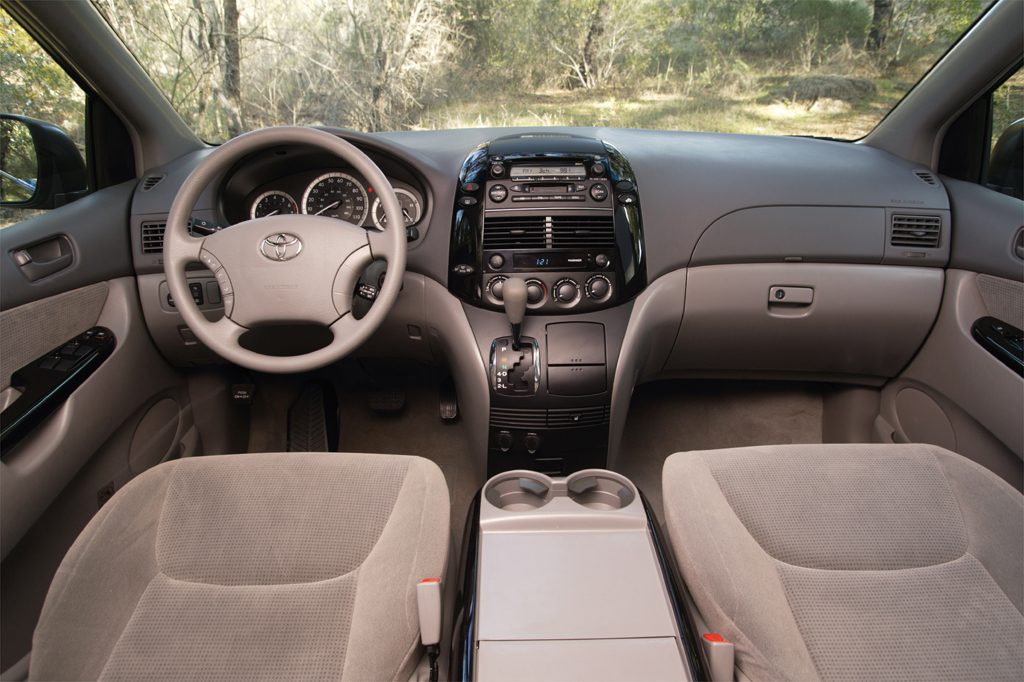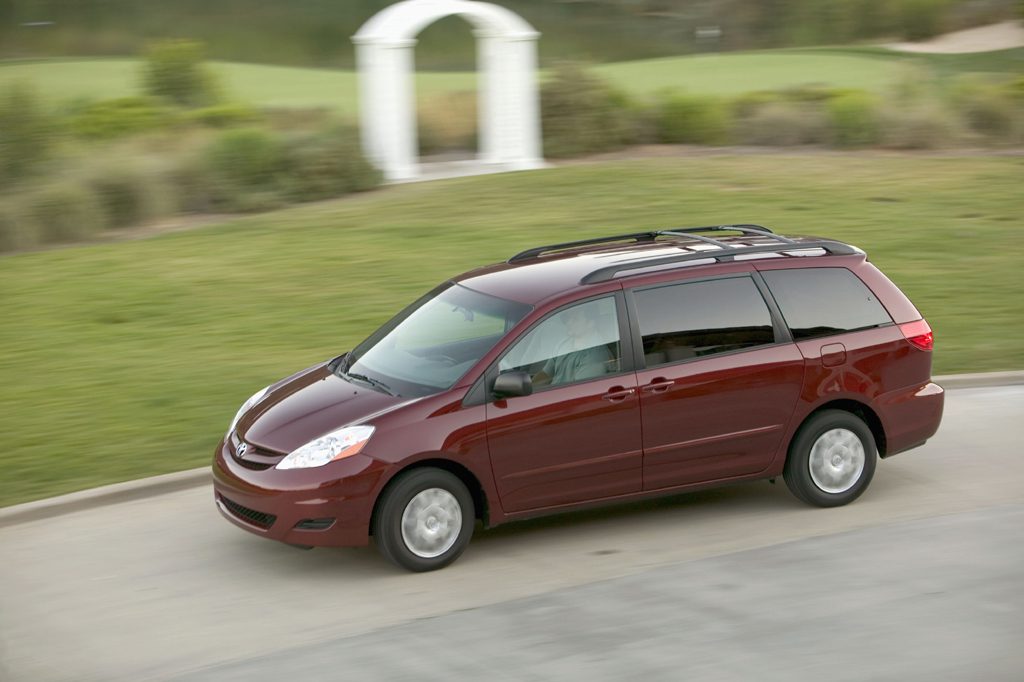| Minivan; Built in USA |
|
|
| Good condition price range: $7,200 – $27,500* |

2004 Toyota Sienna

2004 Toyota Sienna

2004 Toyota Sienna

2006 Toyota Sienna
| Pros: |
|
| Cons: |
|
Sienna blends many good minivan ideas with first-rate refinement, carlike road manners, and solid workmanship. Toyota’s reputation for reliability is a special plus for secondhand shoppers, but it also fuels demand, so Siennas will likely cost more than comparably equipped rivals of the same age and condition. Still, these Siennas earned our Recommended ribbon as new vehicles, and used ones are just as easy to endorse.
Overview
Redesigned Siennas bowed for 2004 with fresh styling, larger dimensions, and more power. Toyota’s minivans also got three first-time options: available head-protecting curtain side airbags, hideaway 3rd-row seat, and all-wheel drive. Against the 1998-2003 Siennas, the new versions were 6.5 inches longer and nearly 4 inches wider on a 5.1-inch longer wheelbase. Curb weight plumped up by about 200 lb. Prices levels expanded from three to four, ascending through CE, LE, XLE and new leather-trimmed XLE Limited. All came with front-wheel drive, and all but the CE were available with AWD that included run-flat tires. A new V6 powerteam offered a 230-hp 3.3-liter engine and 5-speed automatic transmission instead of a 210-hp 3.0-liter engine and 4-speed automatic. The shift lever moved from the steering column to the lower-center dashboard.
All models had antilock brakes, tire-pressure monitor, and a 3500-lb tow package. Limiteds added traction/antiskid control, available for other Siennas. Other linewide standards included remote keyless entry, tilt/telescope steering wheel, and rear air conditioning. Power windows for the sliding rear side doors were also standard-not a minivan first, but new to Sienna. A power right-side sliding door was available for CEs. XLEs and Limiteds included dual power side doors, plus a new power liftgate. All models came with removable 2nd-row bucket seats for seven-passenger capacity. CEs and LEs could carry eight with an available 2nd-row bench seat, also removable, whose middle section was sized for a child safety seat. The new hideaway 3rd-row bench seat folded into a floor well, as on the Honda Odyssey minivan, but one-upped that rival by being split 60/40 for greater versatility.
The new curtain side airbags were standard for Limited, as were front torso side airbags. Other models offered these, again in a confusing array of option packages. Limiteds also came with xenon headlamps, front/rear obstacle detection, and radar-based “smart” cruise control designed to automatically maintain a safe following distance. A navigation system and DVD entertainment were available for XLEs and Limiteds.
Yearly Updates
| 2005 Sienna A virtual carryover from 2004, although XLE and Limited models got standard dual power front seats, supplanting a driver-only power seat. |
| 2006 Sienna The Limited’s front and curtain side airbags were made standard for all Siennas. Limiteds added power-fold door mirrors with integrated turn-signal lamps, plus a power-fold 3rd-row seat as an exclusive option. |
| 2007 Sienna Toyota’s minivan got more power for 2007. A 266-hp 3.5-liter V6 replaced a 215-hp 3.3 V6 as Sienna’s sole engine. |
| 2008 Sienna The 2008 Toyota Sienna was largely unchanged. |
| 2009 Sienna Sienna was again unchanged. |
| 2010 Sienna The 2010 Toyota Sienna was largely unchanged. |
